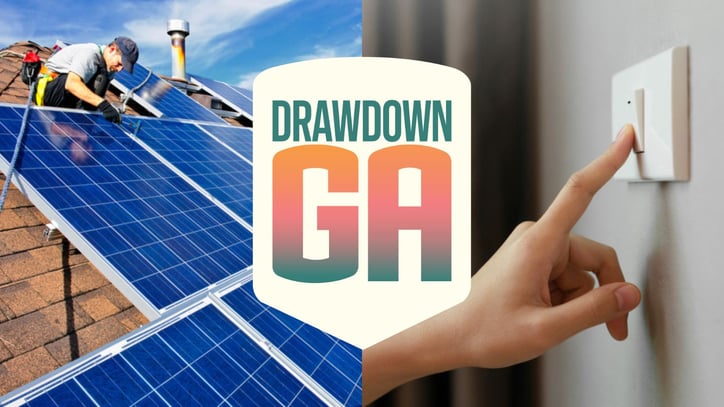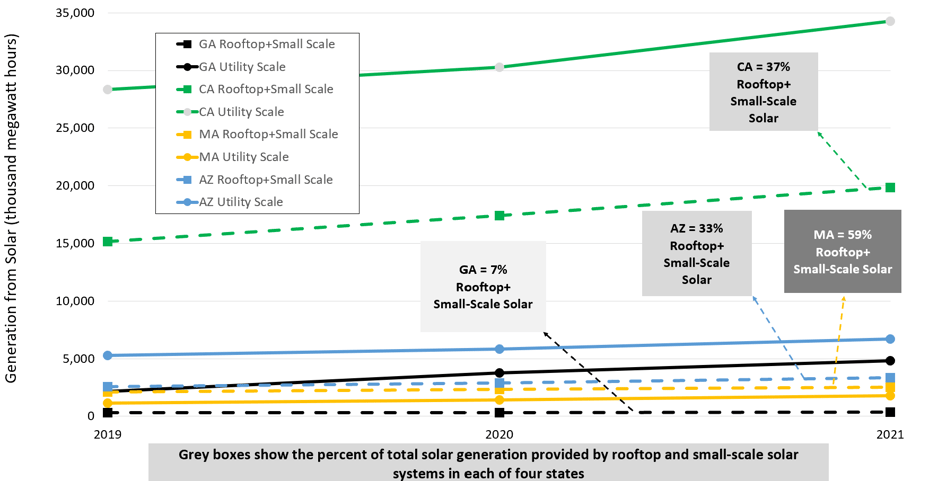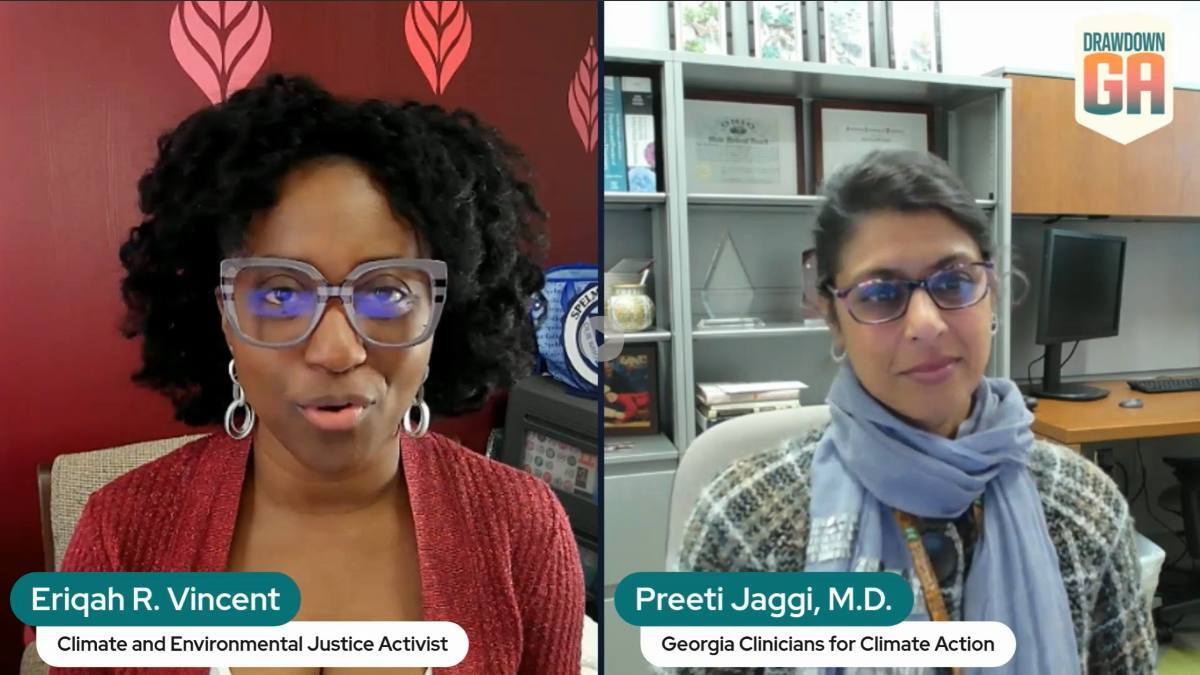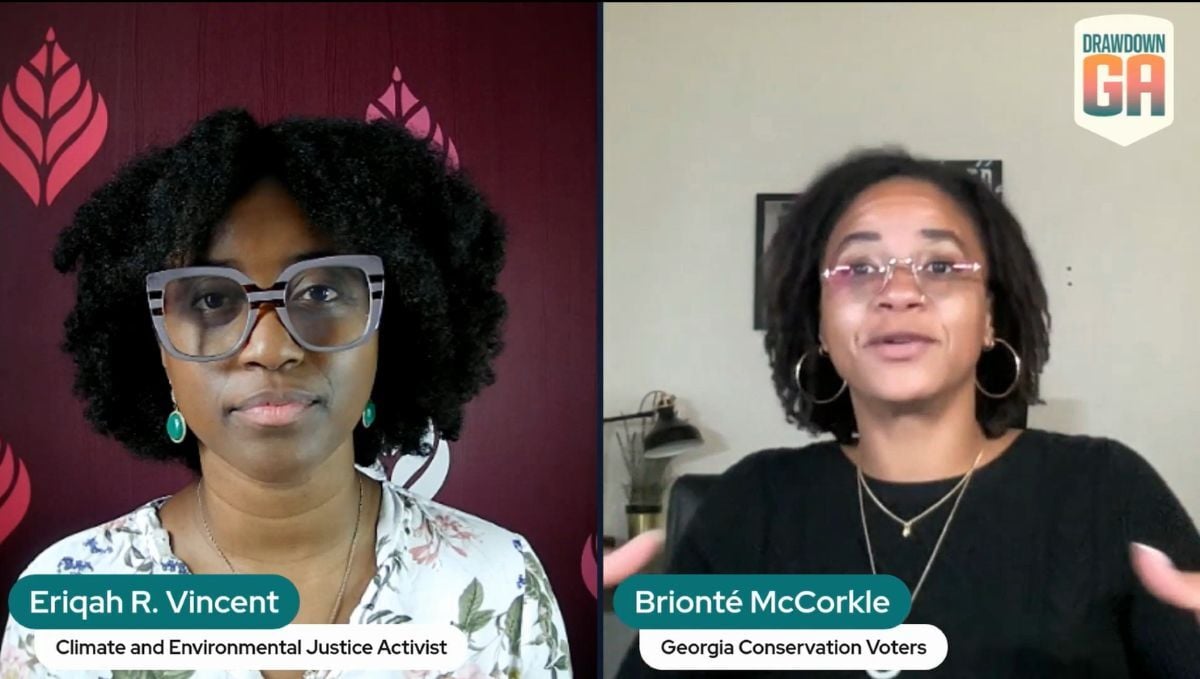The Drawdown Georgia Research Team continues to produce new, Georgia-focused analyses about climate solutions in our state. This includes work by students at colleges and universities across Georgia.
This spring, two teams of Georgia Tech graduate students delivered thoughtful papers and video presentations about rooftop solar and demand response in Georgia. Some of the analytics developed in both papers contributed to testimony provided to the Georgia Public Service Commission (PSC) during the 2022 Georgia Power Integrated Resource Planning process, which charts our state’s energy future for the next 20 years.

A Closer Look at the Rooftop Solar Market in Georgia
Rooftop solar is a climate solution with significant potential in Georgia. As of 2019, there were about 16 megawatts (MW) of existing rooftop solar capacity in Georgia, with 4.3 MW on homes. By 2030, we could reduce emissions by 1 million metric tons if 295,000 new 5 kW solar roofs are installed.
“The State of Rooftop Solar in Georgia,” authored by Giovanni Delgadillo, Camila Gonzalez, Marianus Kick, and Hamidreza Nazemi, shows that the rooftop solar market in GA has been struggling lately because net metering is no longer available. During a Georgia Power pilot program last year, customers were able to sell their monthly netted excess electricity back to the utility at the retail rate. With the termination of that pilot, the incentive for adding rooftop solar is greatly reduced.

The Current State of Rooftop Solar in Georgia
Without a reinstatement of net metering in Georgia, the dominance of utility-scale solar in Georgia relative to rooftop/small-scale solar, will likely continue. While Georgia is a Top 10 state in utility-scale solar, only 7% of the solar power generated in the state comes from rooftop solar. This compares to 59% in Massachusetts, for instance (see Figure below).
The Georgia Public Service Commission postponed deliberation of net metering until late-2022, so stay tuned.

Electricity Generation from Rooftop Solar in Select States in the U.S.
Saving Energy with Demand Response Programs in Georgia
Peak demand for electricity is often met by higher emitting and more expensive sources of energy. In Georgia, we meet peak demand primarily with natural gas, as well as with more polluting and less efficient single-cycle diesel combustion turbines.
Demand Response programs, which encourage households, businesses, and industry to reduce electricity usage during “peak load” periods, can reduce emissions significantly. For example, if 187,000 households shift 10% of their peak to off-peak demand, we’ll eliminate 1 million metric tons of carbon emissions in Georgia.

New Student Research into the Impact of Demand Response Programs
The second student paper, “A Proposed Paradigm Shift of Demand Response in the Southeast,” described the opportunity to introduce a new approach to the market for demand response in the Southeast. The team for this paper included Alvaro Concha, Christopher Contos, Luis Mathias Zacarias, Samantha Morton, and Shavonn D’Souza. They volunteered to work with Southface Institute to help strengthen its expert testimony on Georgia Power’s 2022 Integrated Resource Plan.
Their research examined innovative utility program designs and modeling methods focusing on demand-side resources—i.e., energy efficiency and demand response. Their research outlined why Georgia Power is so well positioned to benefit from demand response programs.

The utility has completed its mission of upgrading all 2.4 million customers to smart meters, and so it is ready to benefit from the advent of technologies such as smart thermostats, wifi-enabled appliances, super-efficient heat pumps, and more.
To address the challenges facing Georgia Power, Demand-Side Management, or DSM, must be treated as a selectable resource that can compete on a level playing field against supply-side resources in its expansion planning models. This is how many of Georgia Power’s peers treat DSM – including Excel, Duke Energy, and TVA.
The good news is that the Georgia Public Service Commission has just stipulated that Georgia Power Company conduct competitive modeling of least-cost demand-side management (DSM) in their future resource planning–what a rewarding outcome for these students!
Hear from Georgia Tech students about Climate Solutions
Both teams provided state-of-the-art information with original calculations, assessments, and policy analytics. You can listen to both the rooftop solar and demand response teams present their findings. Just press the play button in the lower right corner of the presentation files to hear each team talk about their findings.




.png)


.jpg)
